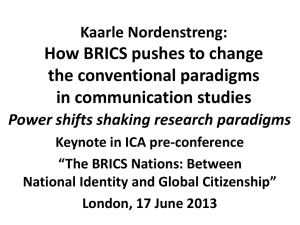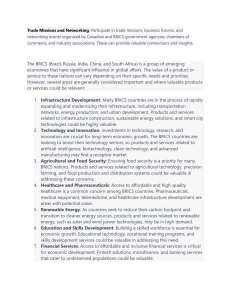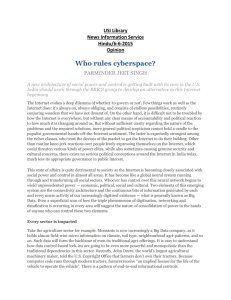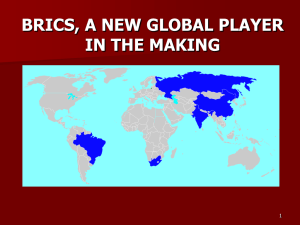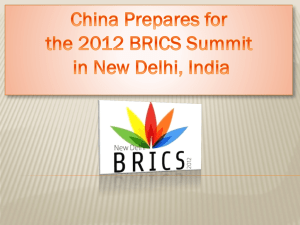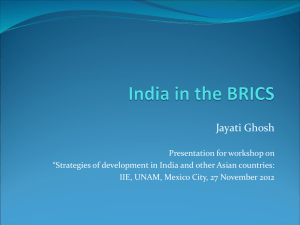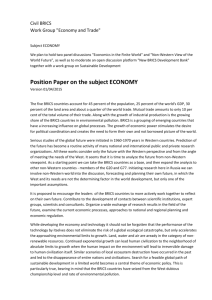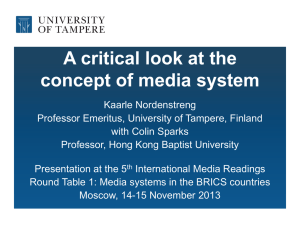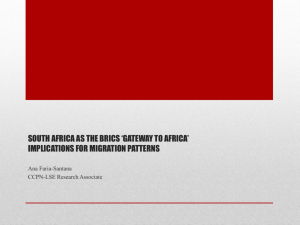The Meetings of the Heads of the National Statistical Institutions of
advertisement
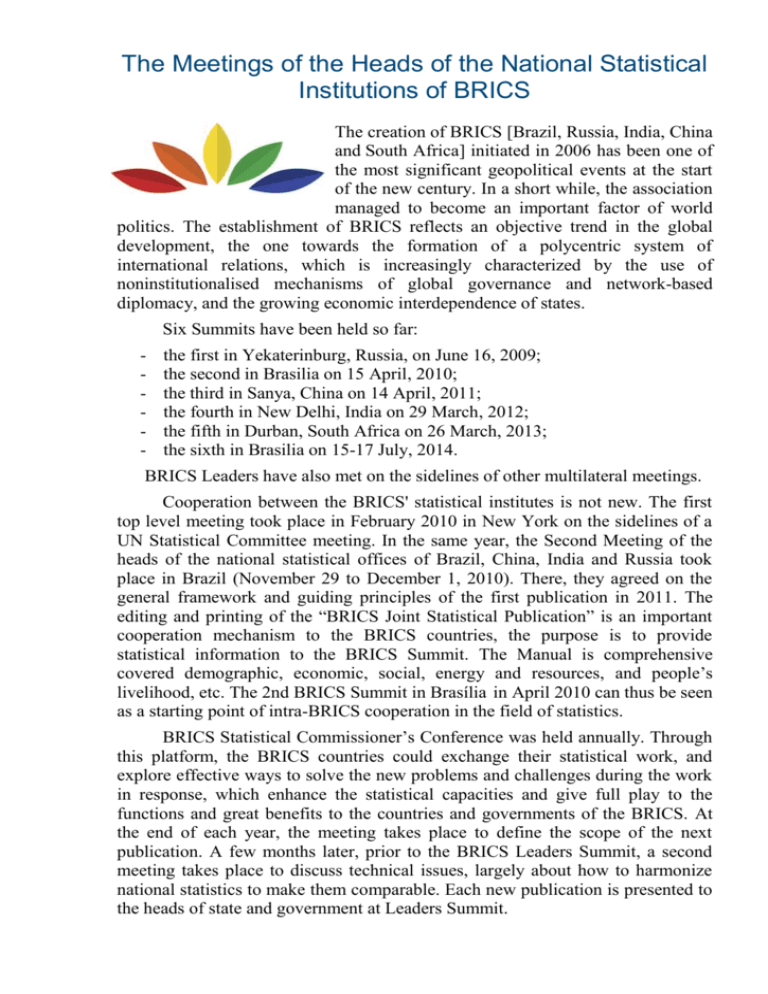
The Meetings of the Heads of the National Statistical Institutions of BRICS The creation of BRICS [Brazil, Russia, India, China and South Africa] initiated in 2006 has been one of the most significant geopolitical events at the start of the new century. In a short while, the association managed to become an important factor of world politics. The establishment of BRICS reflects an objective trend in the global development, the one towards the formation of a polycentric system of international relations, which is increasingly characterized by the use of noninstitutionalised mechanisms of global governance and network-based diplomacy, and the growing economic interdependence of states. Six Summits have been held so far: - the first in Yekaterinburg, Russia, on June 16, 2009; the second in Brasilia on 15 April, 2010; the third in Sanya, China on 14 April, 2011; the fourth in New Delhi, India on 29 March, 2012; the fifth in Durban, South Africa on 26 March, 2013; the sixth in Brasilia on 15-17 July, 2014. BRICS Leaders have also met on the sidelines of other multilateral meetings. Cooperation between the BRICS' statistical institutes is not new. The first top level meeting took place in February 2010 in New York on the sidelines of a UN Statistical Committee meeting. In the same year, the Second Meeting of the heads of the national statistical offices of Brazil, China, India and Russia took place in Brazil (November 29 to December 1, 2010). There, they agreed on the general framework and guiding principles of the first publication in 2011. The editing and printing of the “BRICS Joint Statistical Publication” is an important cooperation mechanism to the BRICS countries, the purpose is to provide statistical information to the BRICS Summit. The Manual is comprehensive covered demographic, economic, social, energy and resources, and people’s livelihood, etc. The 2nd BRICS Summit in Brasília in April 2010 can thus be seen as a starting point of intra-BRICS cooperation in the field of statistics. BRICS Statistical Commissioner’s Conference was held annually. Through this platform, the BRICS countries could exchange their statistical work, and explore effective ways to solve the new problems and challenges during the work in response, which enhance the statistical capacities and give full play to the functions and great benefits to the countries and governments of the BRICS. At the end of each year, the meeting takes place to define the scope of the next publication. A few months later, prior to the BRICS Leaders Summit, a second meeting takes place to discuss technical issues, largely about how to harmonize national statistics to make them comparable. Each new publication is presented to the heads of state and government at Leaders Summit.

